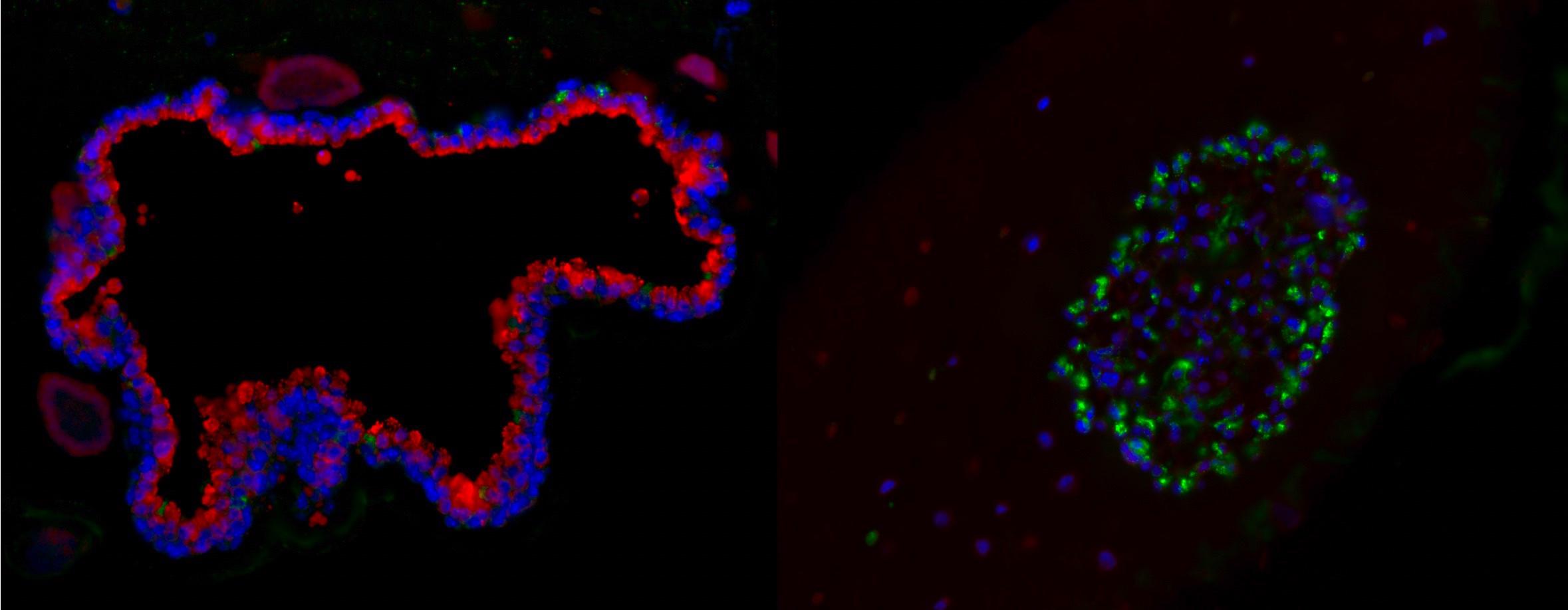
Submitted by Administrator on Mon, 11/09/2017 - 15:46
Scientists at the Wellcome - MRC Cambridge Stem Cell Institute along with colleagues at the Children’s Hospital Boston have used 3D stem cell organoids to understand the process of lung cell formation, revealing new possibilities for the treatment of asthma and emphysema.
To stay healthy, our lungs must maintain two key populations of cells: the alveolar epithelial cells, which make up the small sacs where gas exchange takes place, and bronchiolar epithelial cells, also known as airway cells. These two cell types are generated from stem cells found in the lungs. Dr Joo-Hyeon Lee (Cambridge Stem Cell Institute) and Dr Carla Kim (Children’s Hospital Boston & Harvard Medical School) used a 3D “organoid” culture system to understand how the lung stem cells decide whether to differentiate into an alveolar cell or an airway cell.
The research, published in the journal Cell, showed that the lung’s mesenchymal cells control the stem cell differentiation pathway, telling the lung stem cells what type of cell they should become. Using cutting edge single-cell RNA sequencing techniques, the scientists were able to show that these important mesenchymal cells come in at least five flavours, each with a different molecular signatures. Cells with a marker called LGR5 secrete a lot of a molecule called Wnt5A that promotes the formation of alveolar cells, while cells with the LGR6 marker are important for repair of airway cells.
“If you have a disease like emphysema where alveolar cells aren’t being repaired, stimulating the WNT pathway could be important,” says Kim. “When WNT is blocked, you get the alternate kind of cell. But if you add WNT back in, it goes back to normal.” For airway problems like asthma, blocking WNT or finding a way to boost formation of LGR6-bearing cells could be explored as ways to increase production of airway cells.
Lee JH, Tammela T, Hofree M, Choi J, Marjanovic ND, Han S, Canner D, Wu K, Paschini M, Bhang DH, Jacks T, Regev A, Kim CF. Anatomically and Functionally Distinct Lung Mesenchymal Populations Marked by Lgr5 and Lgr6. Cell. 2017 Sep 7;170(6):1149-1163.e12 PMID: 28886383

